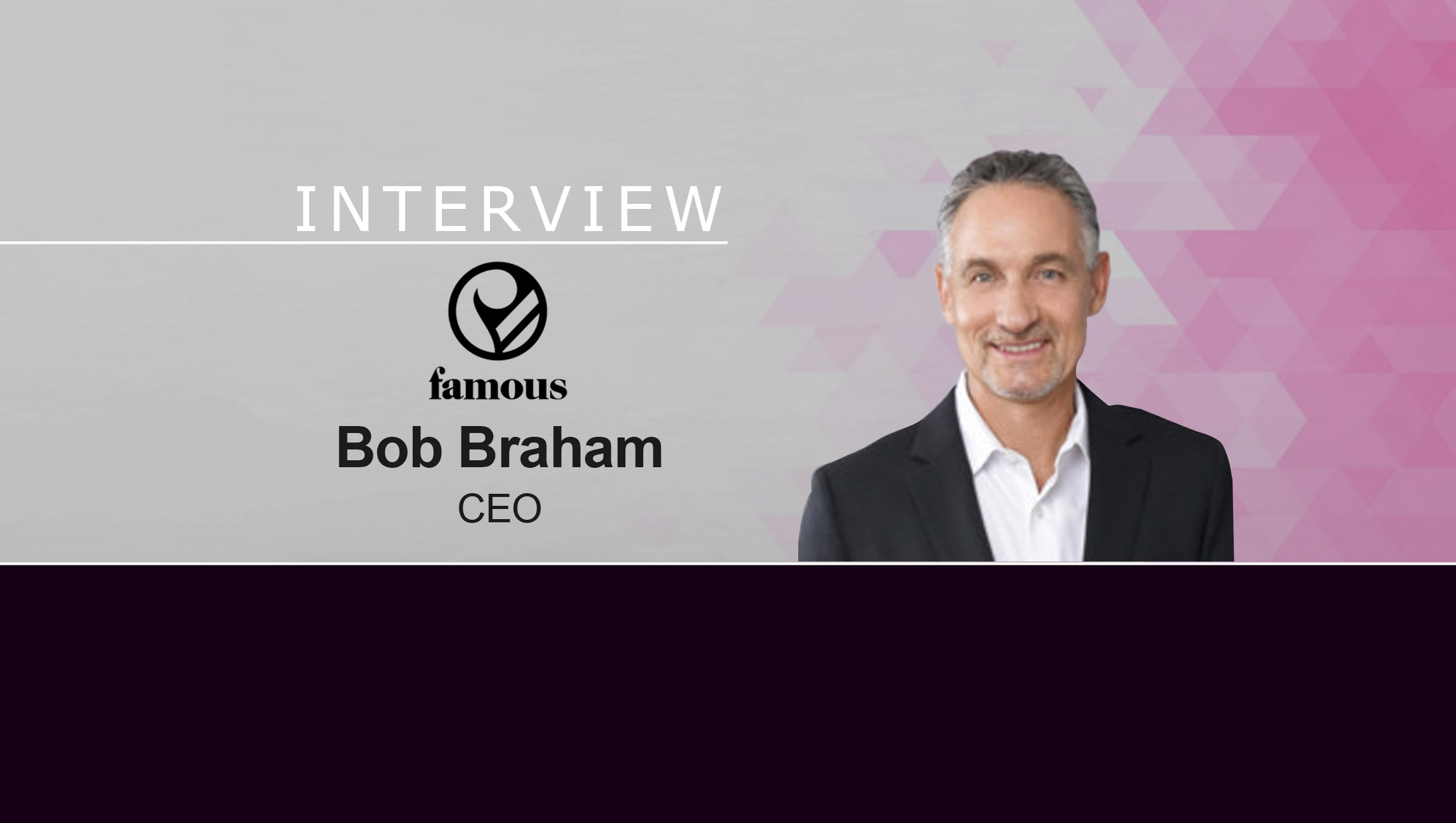Mobile shopping and mobile ecommerce trends have witnessed a significant shift during this ongoing pandemic, Bob Braham, CEO at mobile ecommerce experience platform – Famous discusses more about these changing dynamics in this MarTech Series chat: _______ I’m currently the CEO of Famous, a mobile ecommerce experience platform, but before joining here I’ve led a 30 year career of working in various executive leadership roles for high-tech organizations. Most of these companies were well-known, high-growth brands like Hewlett Packard, Dell/EMC, and Silicon Graphics (eventually acquired by HP). During that time I’ve gained quite a bit of experience leading small to midsize companies to turnarounds and subsequent exits. The key has been to leverage a great technology into a compelling market. Our vision at Famous is to bring brands’ products to life on any mobile device. To achieve that we’ve just launched Famous Pro for Shopify. This new no-code platform allows marketing managers, ecommerce managers, and designers to easily design 100% customized engaging mobile storefronts – our customers have said that they are seeing up to 40% increased sales conversions on their Shopify stores after implementing Famous. The impetus for launching this platform came from three things we’ve been seeing in the market. First, mobile ecommerce platforms like Shopify are becoming powerful sales channels for brands and merchants. Second, industry surveys show that almost 80% of all ecommerce traffic is mobile, and creating a great mobile experience is challenging. And third, good design, customer experience and well-branded content are critical to being successful in mobile ecommerce, but technical barriers and cost, including hiring developers, can be high. Our new platform Famous Pro is built to help companies – particularly budding small and medium businesses – take complete creative control of their mobile storefront experience. The platform is built to help drive higher conversions by providing customers with a better “first “impression” of a brand’s products. Famous Pro is no-code, Shopify compatible, loaded with premium designs and animations, and features a “matchmaking service”, where merchants can get paired with a designer to help create pages optimized for engagement and increased conversions. Marketing Technology News: MarTech Interview with Steven Kellam, SVP Marketing and Alliances at 360insights I think the pandemic simply accelerated an already existing trend around ecommerce adoption. Because the pandemic closed in-person shopping, brands that had historically relied on brick-and-mortar stores to sell products had to quickly pivot to digital channels. Additionally, the increased time spent at home and job instability seems to have inspired more individuals to start their own small online businesses. All of this contributed to the fact that ecommerce sales grew by an estimated 44% in 2020 (compared to 2019). We can see further the evidence of this pandemic-inspired shift by examining Shopify, one of the main ecommerce platforms. Shopify reported that it doubled sales for 3 consecutive quarters in 2020 and saw a big spike in merchants on its platform, with more than 1 million of those merchants being first-time entrepreneurs. While this kind of ecommerce “boom” is exciting, the rapid pace of growth also means that these types of marketplaces might soon become very crowded and competitive. Until now, merchants have been focused on the operational side of the business. That meant getting things like logistics, payment, and shipping established. Today marketers (or merchants with their marketing-hats on), are challenged with getting their brand to stand out from the noise, followed by converting and retaining customers. These are the pain points that are contributing to the increase in demand for immersive and well-designed storefronts. Online storefronts that have clear branding, compelling design, and are easy to use (especially during checkout) are critical to captivating and converting customers. In fact Shopify has research that shows that immersive website design and branding can double the likelihood of a customer making a purchase once they are in a storefront. And, according to research from Forrester 61% of U.S. online adults are unlikely to return to a website that does not provide a satisfactory customer experience. At Famous, we have worked with some globally recognized brands and have learned some of their best practices. The one convention that stands out to me is the policy of doing rapid prototyping. Get a design, publish it quickly and monitor the results. We’ve learned from brands that those that leverage rapid prototyping give themselves a significant competitive advantage. This is one of the reasons why Famous has so much intellectual property in our no-code capability, rather than settling for low code. Non technical people can create designs and immediately publish without waiting for the work of developers to test out their ideas. A large portion of our team at Famous either have backgrounds as marketers or designers, so we have a good understanding of the types of roadblocks that brands typically face in this landscape. The barriers that brands usually face when trying to build better mobile ecommerce shopping experiences include: cost, lack of skill or technical expertise, and inadequate tools. Unfortunately these barriers often convince brands to do the bare minimum instead of spending the resources to create mobile shopping experiences that are truly innovative and generate more business. Luckily, these are all challenges that technology can, and does, help solve. Platforms like WordPress, Wix and Squarespace were the first iterations of what technology can do – they made it easier to create basic websites for folks who didn’t have coding expertise. Now, platforms like Famous Pro, are taking that to the next level and enabling those folks to create premium, incredibly engaging, and well branded shopping experiences with no code at all. Platforms like this can also help reduce time and cost spent on design, and help brands not only get to sales faster but increase their conversion rates. In terms of how the mobile commerce landscape is continuing to change – I think that social commerce will be an important trend to keep an eye one. A majority of social commerce (e.g. shopping through social platforms) happens on mobile, and in fact we’re already starting to see some strategic partnerships between ecommerce and social platforms like Shopify and TikTok take place. It’s possible that social commerce will play a big part in how brands figure out how to be more present and effective in the mobile commerce space. Marketing Technology News: MarTech Interview with Tobias Knutsson, CEO at Adverty The future of ecommerce is definitely mobile. The CEO of PayPal has indicated that 75% of the company’s business is now on mobile. The reason it’s critical for brands to focus on creating better mobile shopping experiences is because the experience a consumer has on your mobile site is directly tied to whether they decide to buy. Research has shown that sites with faster load times have lower bounce rates and encourage people to stay longer and purchase more. In fact a simple 0.1 second speed improvement of a mobile site can increase conversion rates by 8.4% on retail sites. The conversion expands when you scale to .25 and 0.5 seconds. Similarly, research from Forrester revealed that not only are 61% of U.S. adults unlikely to return to websites that don’t provide satisfactory experiences. This means that a brand that is able to get these mobile shopping experiences right through responsive performance and engaging interactions – like an immersive storefront achieves – it has a much better chance at capturing attention and converting audiences, even if the space is crowded. We already discussed the notion of rapid prototyping, to quickly get new designs to the storefront, test them, and immediately pivot based on the results. The other top sites we’ve worked with grasp the notion of personal engagement. If a user is viewing a static site and simply reading information, they will only consume so much. When that same user interacts with the site, by swiping to see different views, for example, the engagement becomes much richer and the attention more focused. And finally, performance is paramount. We cited before how simple increases in performance lead to higher conversions. IBM did a study many years ago about the threshold of human attention and how dramatically it drops off after a fraction of a second awaiting a response. The user’s mind drifts to non-related issues such as picking up their kids after work, their upcoming golf game, and all sorts of things that are unrelated to your company making a sale. Marketing Technology News: MarTech Interview with Paul Azorin, Co-founder and Chief Brand Officer, BairesDev Famous is a mobile ecommerce experience platform that enables merchants to captivate their customers through beautiful, engaging and immersive designs, leading to more decreased bounce rates, increased customer loyalty and higher conversion rates. The company makes it easy to create and customize a storefront, with little to no technical expertise required.
Bob is the CEO of Famous, a mobile ecommerce platform. He has over 30 years of leading high-tech organizations, including Hewlett Packard, Dell/EMC and Silicon Graphics leveraging that experience to lead small to midsize companies. Previously, Bob was the Chief Revenue Officer of ClearStory Data, a software firm, helping lead the company to an acquisition.
Tell us a little about yourself Bob…we’d love to hear about the Famous platform and also, your most recent launch – Famous Pro?
How are you seeing the demand for immersive storefronts grow in today’s marketplace? A few thoughts on how leading brands have been able to create strong storefront experiences? How do you feel the effect of the pandemic will change all of this?
Can you share a few of your thoughts on the changing mobile ecommerce landscape today and how leaders in the online selling market are capitalizing on tech to create better shopping experiences?
If the future of commerce and ecommerce is mobile (like a lot of industries today!) what are your thoughts on how brands should be capitalizing on better mobile shopping experiences that are safe and ensure repeat purchases?
Take us through some of the leading ecommerce experiences / sites from around the world and the biggest learnings that can come away from those examples?
How do sales and marketing leaders combine different marketing technologies and sales methodologies to lead effectively through these trying times? Catch more from these latest podcasts!




